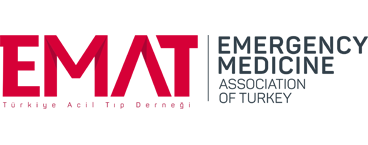Cocaine and ketamine‑induced paraspinal muscle compartment syndrome
Thomas Saliba1 , Simone Giglioli2
, Simone Giglioli2 , Sanjiva Pather1
, Sanjiva Pather1 , Daniel DeBacker2
, Daniel DeBacker2
1Department of Imaging, CHIREC Hospitals, Université Libre de Bruxelles, Brussels, Belgium
2Department of Intensive Care, CHIREC Hospitals, Université Libre de Bruxelles, Brussels, Belgium
Keywords: Back pain, cocaine, computed tomography scan, fasciotomy, ketamine, rhabdomyolysis
Abstract
Lumbar paraspinal compartment syndrome is a rare pathology, with only 40 reported cases resulting from an increase in pressure within the muscle compartment. Symptoms typically involve pain and sometimes muscular deficits. The typical patient is a man who has undergone strenuous exercise, with few cases linked to the use of recreational drugs, such as cocaine or ketamine. We report the case of a 25 year old man presenting to the emergency room with severe diffuse back pain who had recently consumed large amounts of cocaine, ketamine, and alcohol. The patient had diffuse muscular pain, increased serum creatine kinase (CK) levels, and a negative noncontrast abdominal computed tomography (CT), leading to the suspicion of crush syndrome. Over the following days, the patient’s pain became more localized to the right paraspinal region, prompting a contrast enhanced CT. This revealed signs of muscle swelling and edema of the paraspinal muscle, leading to a suspicion of compartment syndrome, which was confirmed by an intramuscular pressure measurement. The patient underwent a surgical fasciotomy. The patient went on to have an unremarkable recovery. Lumbar paraspinal compartment syndrome is exceedingly rare. Cocaine is known to cause rhabdomyolysis both indirectly, due to behavioral disturbances, and directly due to muscle toxicity. Similarly, ketamine use has also been associated with rhabdomyolysis. The rhabdomyolysis results in greatly increased CK levels, sometimes rising up to 100 00 U/L, which should normalize over the following days. A few cases of compartment syndrome, often localized in extremities, have been reported in patients presenting cocaine or ketamine induced rhabdomyolysis. In this patient, the muscle swelling of the paraspinal muscle resulted in compartment syndrome. Patients who experience cocaine related rhabdomyolysis have a tendency for nonspecific symptoms, which would match our patient’s initial presentation. Although radiology’s contribution to the diagnosis is limited, patients suffering from back pain or nonresolving rhabdomyolysis should be submitted to imaging, which may show signs of muscle swelling and edema on CT and magnetic resonance imaging. Diagnosis of compartment syndrome should be confirmed by measurement of muscle pressure, and if elevated, the patient should be proposed for fasciotomy.
How to cite this article: Saliba T, Giglioli S, Pather S, DeBacker D. Cocaine and ketamine-induced paraspinal muscle compartment syndrome. Turk J Emerg Med 2025;25:147-51.
The authors certify that they have obtained all appropriate patient consent forms. In the form, the patient has given his consent for his images and other clinical information to be reported in the journal. The patient understands that name and initials will not be published and due efforts will be made to conceal identity, but anonymity cannot be guaranteed.
• TS:
Conceptualization
Writing – Original Draft:
Writing – Review and Editing.
• SG:
Original Draft
Methodology
Formal Analysis: Analyzed the data and interpreted the results, contributing to the statistical aspects of the research
Writing – Review and Editing.
• SP:
Original Draft
Writing – Review and Editing
Data Curation
Visualization.
• DDB:
Conceptualization
Original Draft
Writing – Review and Editing
Methodology
Supervision
Investigation
Data Curation
Visualization
Project Administration.
Thomas Saliba: none to declare, Simone Giglioli: none to declare, Sanjiva Pather: none to declare, Daniel De Backer: Edwards Lifesciences, Philips, Baxter, Viatris, Pharmazz, AOP.
None.

